
Slow morning at Greater Rochester International Airport (ROC) in upstate New York – Photo: Steven Paduchak
Ever wonder what it’s like to be ’œthat guy?’ Specifically, when trying to get on a particular flight, standing up at the kiosk as the gate agent scans everyone’s boarding pass? Well people, I had the distinct opportunity to be ’œthat guy.’ Welcome to the world of flying via standby.
What is ’œstandby’ flying? Well, I’ll tell you. People who are on a standby list for a particular flight have the option to snag any available seats left over once the boarding process is complete. By ’œstandard passengers,’ I, of course, mean people who actually paid money (or miles) for their ticket. Flying standby is most commonly a result of a friend or relative working for that specific airline, or regional affiliate. My first week being a part of this kind of travel was entertaining, exciting, nerve-wrecking, aggravating, and unorthodox, to say the least. Here’s how it all got started.
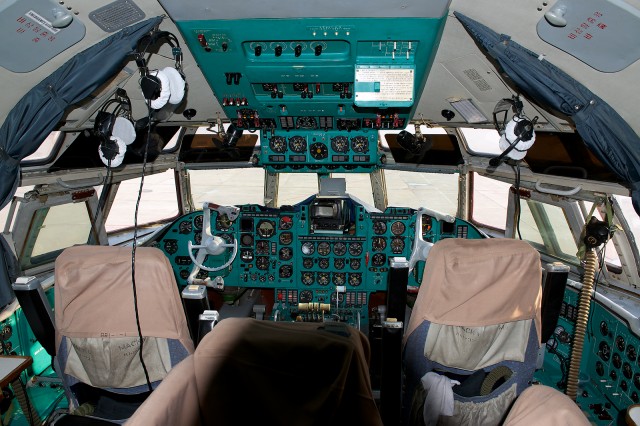
The flight deck on the Air Koryo IL-62 – Photo: Bernie Leighton
Some people might think our own Bernie Leighton, AirlineReporter Managing Correspondent, is crazy. He has had the opportunity to fly around the world on some old and unique airplanes others might be afraid to step foot on. But Bernie throws caution to the wind and looks to fly on planes that make many AvGeeks jealous. The specialty aircraft he has flown and reported on, via AirlineReporter, include:
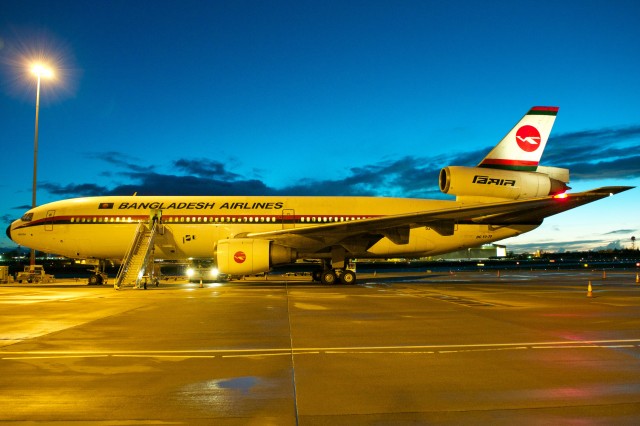
Biman DC-10 ready for boarding – Photo: Bernie Leighton
And that is not to mention the ’œnormal’ airplanes he flies on too, like the 747, Q400 and G650. Since he has experienced so many different types of aircraft, I wanted to interview him and have him share his ideas. Here is our interview:
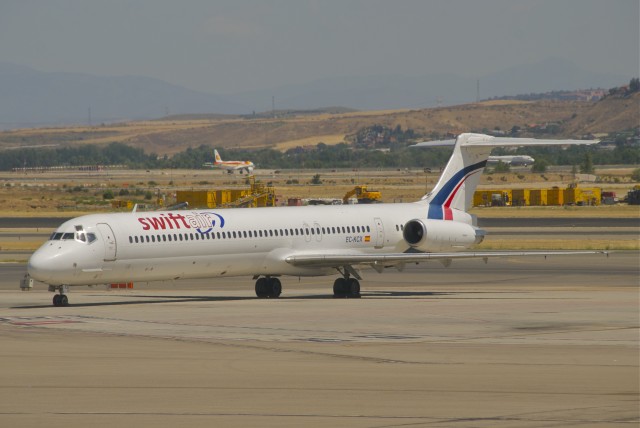
A Swiftair MD-83 similar to the aircraft that crashed in Mali today. Photo – Aero Icarus | Flickr CC
According to the French Ministry of Defense Air Algerie flight AH5017, operated by Swiftair has crashed in Mali.
The MD-83 was flying from Ougadougou, Burkina Faso to Algiers carrying 110 passengers and six crew. Air navigation services lost contact with the aircraft at 9:55pm ET. The last message received from the aircraft was a request to reroute around heavy rain storms at around 9:30pm ET.
The aircraft involved in the crash was one of two MD-83s that were on lease from Spanish charter-carrier Swiftair. The registration number was EC-LTV (c/n 53190 l/n 2148) and was built in June 1996. In August 2012 and then had some heavy maintenance at Porto Alegre, Brazil, before delivery to Swiftair in late 2012. During 2013 it was leased to the UN in the Horn of Africa (operated by Swiftair).
The passengers were comprised of 50 people from France, 24 from Burkina Faso, eight Lebanese, six Algerians, five Canadians, four Germans, two from Luxembourg; one from Mali, one Cameroonian, one Belgian, one Ukrainian, one Romanian, one Swiss, one Nigerian, and one Egyptian.
Per the Telegraph; French DGCA (Directorate General for Civil Aviation) inspected the plane a few days ago in Marseille and found no faults.
This is a developing story and will be updated with new information.
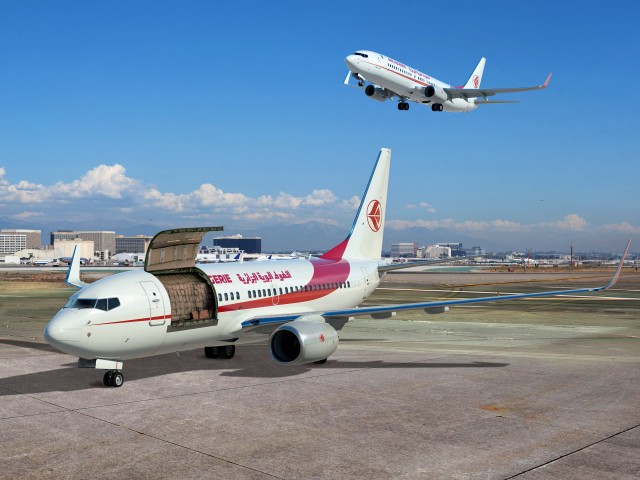
Composite image of an Air Algerie Boeing 737-700C – Image: Boeing
The Boeing 737-700C is an interesting aircraft. What makes it unique is its ability to convert from passengers to cargo depending on how the airline wants to use it. If you have heavy passenger flow during the summer, but more cargo during the winter, being able to convert between the two is quite helpful.
What also makes the 737-700C unique is that, like the Boeing Business Jet (BBJ), it has strengthened wings, different than the standard passenger 737-700. When in passenger configuration, the plane can hold 120-140 seats and fly 3,205nm. In an all-cargo set up, it can haul 40,000 pounds and fly 2,880nm.
The model was launched back in September 1997, when the US Naval Reserve ordered two and called them the C-40A Clipper. This was a big deal, since there had not been a convertible version of the 737 built from the Next Generation-version of the 737 at the time.
The US Navy currently operates 12 C-40As to move personnel and supplies around the world. Think of it as an airliner for the military.
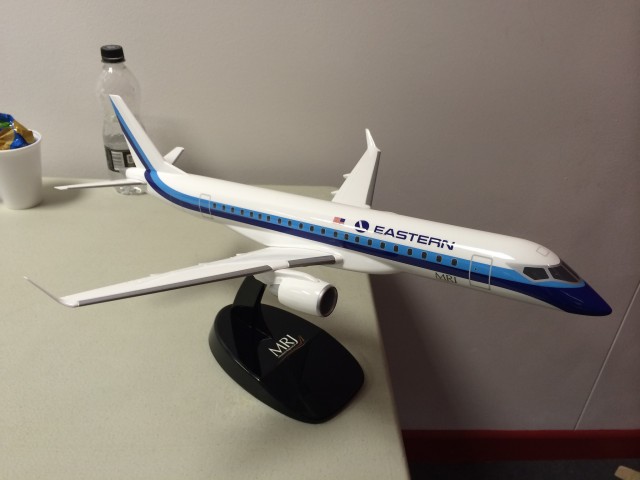
A model at Farnborough showing the Eastern livery on the MRJ90 – Photo: Jon Ostrower
Whenever there is news that a startup airline is going to launch with a classic name-sake, I get a little excited. When press releases started coming in saying that Eastern Air Lines was going to start up again, I was happy, but of course skeptical.
Even back in May when they signed an initial order with Boeing and placed deposits for 10 737-800NG and 10 737 MAX 8 aircraft, I was unsure about the viability of the airline.
Then, last week at the Farnborough Airshow, they announced the signing of a Memorandum of Understanding for 20 Mitsubishi MRJ90 aircraft, with purchase rights to an additional 20. Now, I am starting to pay a bit more attention.





